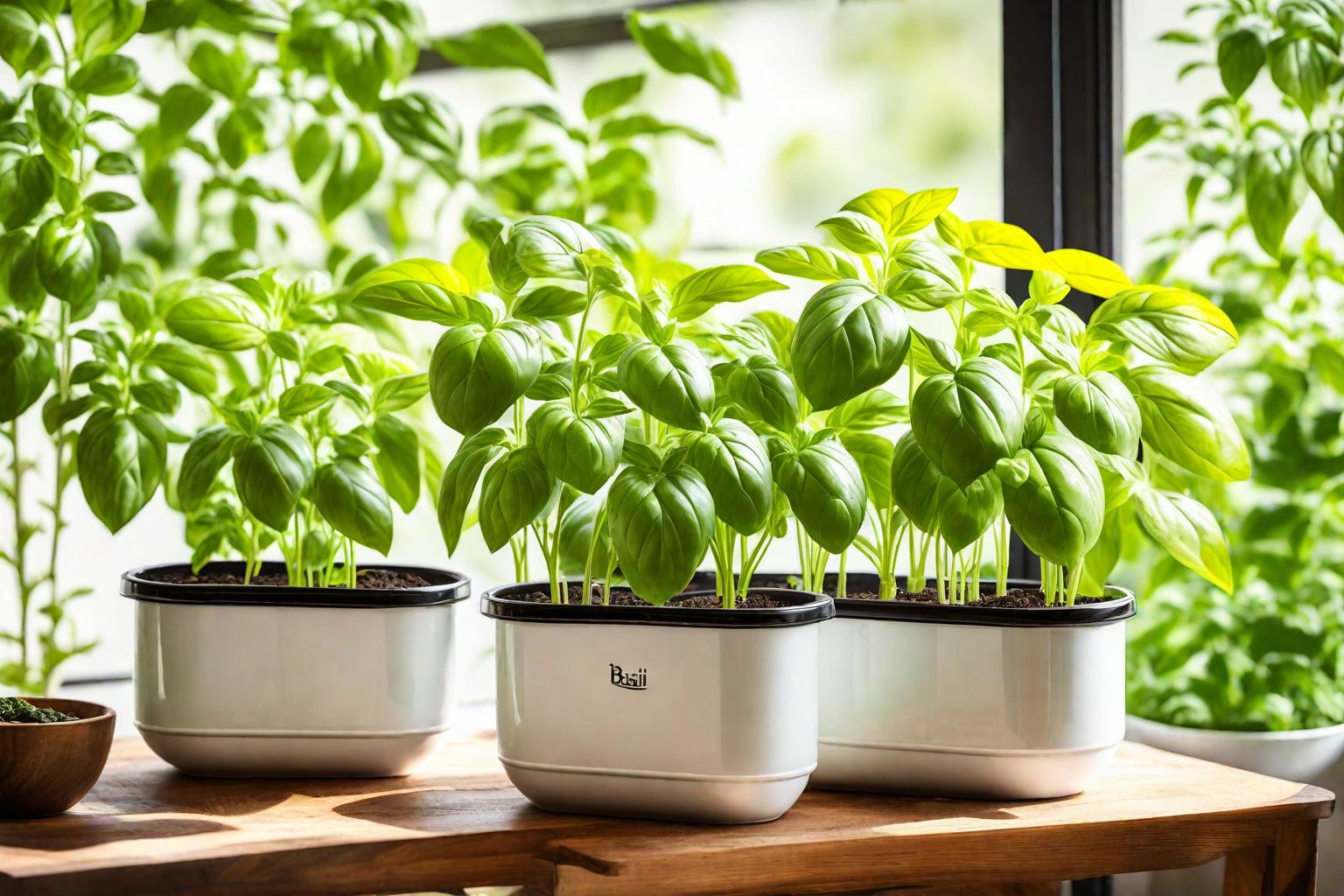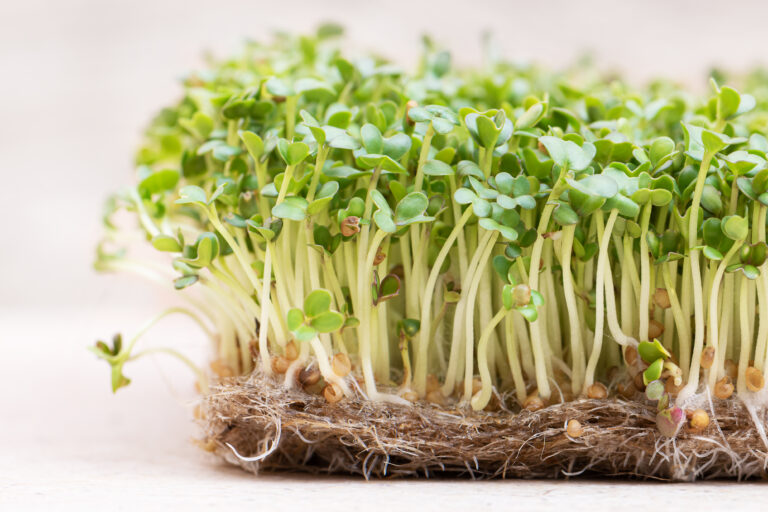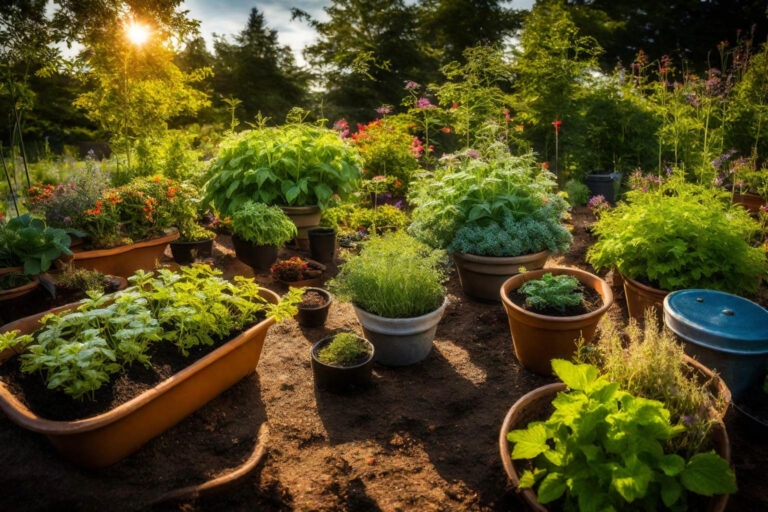How to grow basil seeds in container| step-by-step guide
Basil is a delightful herb that not only adds flavor to dishes but also brings vibrancy to your container garden. Growing basil seeds in a container is a rewarding experience that brings freshness right to your fingertips. Let’s embark on this aromatic journey together!
Introduction
Container gardening has emerged as a popular trend, especially among urban dwellers. The allure lies in its accessibility and flexibility. Imagine having a mini garden, perfectly suited to your living space, where you can nurture herbs like basil without the need for extensive land or garden beds.
The beauty of container gardening with basil seeds lies in its adaptability. Basil thrives in warm climates but can also flourish indoors with adequate sunlight. By growing basil in containers, you’re not only maximizing space but also ensuring that this herb gets the ideal conditions for growth. Moreover, container gardening allows for better control over soil quality, moisture levels, and pest management.
Importance of Basil:
Basil, an herb renowned for its aromatic leaves and distinctive flavor, holds significant importance in culinary and health contexts. Its culinary prowess extends across various cuisines, adding a fresh, slightly sweet, and peppery note to dishes. From Italian classics like caprese salads to Thai curries and pesto sauces, basil’s versatility makes it a kitchen essential.
Beyond its culinary contributions, basil boasts a treasure trove of nutrients. It’s a source of essential vitamins and minerals, including vitamin K crucial for bone health and blood clotting, vitamin A important for vision and immunity, and vitamin C, a powerful antioxidant. Basil also offers minerals like calcium for bone strength, iron vital for oxygen transport, and magnesium supporting muscle and nerve function.
Moreover, basil packs a punch with antioxidants like flavonoids and polyphenols, combating oxidative stress and potentially reducing the risk of chronic diseases. Its essential oils, such as eugenol, possess anti-inflammatory properties, contributing to overall health by potentially reducing inflammation in the body.
II. Selecting the Container
A. Choosing the Right Size and Material
Selecting the perfect container for your basil seeds is crucial for their health and growth. Firstly, consider the size. Basil, like many herbs, loves to stretch its roots. A container that’s too small can restrict root growth and hinder the plant’s development. On the other hand, a container excessively large might hold too much moisture, potentially causing root rot. Aim for a container that’s about 8-12 inches in diameter and depth, providing ample space for root expansion while maintaining appropriate moisture levels.
Now, let’s talk about materials. Clay pots are a classic choice; they are porous, allowing air and moisture exchange that aids in regulating soil moisture levels. This prevents the soil from becoming waterlogged, a common issue that affects basil growth. Plastic containers, while not as breathable as clay, retain moisture more effectively and are lighter, making them easier to move around. They’re a great option if you tend to forget your watering schedule or if your environment has higher temperatures that may dry out the soil quickly.
Consider the location where your basil will thrive. If it’s a sun-soaked spot, clay pots might be advantageous as they allow excess moisture to evaporate more quickly. Conversely, if your basil resides in a more shaded area, a plastic container might help retain the necessary moisture.
B. Providing Proper Drainage
Drainage is the unsung hero of container gardening. Basil detests standing water around its roots. To prevent waterlogging, ensure your chosen container has drainage holes at the bottom. These holes facilitate proper water drainage, preventing excess moisture from accumulating and suffocating the roots.
To further enhance drainage, add a layer of small rocks, pebbles, or broken pottery pieces at the bottom of the container before filling it with soil. This layer acts as a barrier, preventing the soil from blocking the drainage holes while allowing excess water to escape.
Additionally, consider elevating the container slightly using pot feet or placing it on a small stand. This elevation allows better airflow underneath the container, reducing the risk of waterlogging and potential root rot.
III. Preparing the Soil
A. Using Nutrient-Rich Soil
The foundation of a healthy basil plant starts with the soil. Opt for well-balanced, nutrient-rich soil that promotes robust growth. Consider using a high-quality potting mix specifically formulated for herbs or vegetables. These mixes often contain essential nutrients like nitrogen, phosphorus, and potassium – key elements for basil’s growth. If you’re feeling adventurous, enrich the soil further by mixing in compost or organic matter to boost its nutrient content.
B. Ensuring Good Aeration
Basil roots, like any plant, need to breathe! A well-aerated soil allows for proper root development and oxygenation. To achieve this, aim for a loose and friable soil texture. Avoid overly compacted soil that restricts air circulation and hinders root growth. Incorporating perlite, vermiculite, or coarse sand into the soil mix can improve aeration by enhancing its structure and promoting better drainage. These additions create air pockets, allowing roots to access oxygen and water more effectively.
Remember, basil adores a soil that’s rich in nutrients but also fluffy and airy, creating an ideal environment for its roots to thrive and flourish.
IV. Planting the Basil Seeds
A. Sowing the Seeds at the Right Depth
When planting basil seeds, precision matters! Aim to sow the seeds at a depth of about 1/4 to 1/2 inch in the soil. Basil seeds are tiny, and burying them too deeply might inhibit their ability to sprout. Gently press the seeds into the soil and cover them lightly with a thin layer of soil or vermiculite.
Ensure you maintain a consistent seed spacing of around 6 inches apart to allow ample room for the basil seeds to grow without crowding each other. Additionally, labeling each planting row or pot can be incredibly helpful, especially if you’re growing different basil varieties.
B. Maintaining Optimal Moisture Levels
Basil seeds are like tiny sprouts craving just the right amount of moisture. To ensure successful germination, keep the soil consistently moist but not waterlogged. Consider using a spray bottle or a gentle watering can to avoid disturbing the seeds.
Maintain moisture levels by lightly misting the soil surface, ensuring it remains damp. Be cautious not to drench the soil, as excessive moisture can lead to seed rot or fungal issues. Using a plastic cover or a humidity dome over the seedling tray can create a mini greenhouse effect, helping to retain moisture and create an optimal environment for seed germination.
Monitor the soil moisture regularly and adjust your watering schedule as needed to keep it consistently moist until the basil seeds sprout. Remember, basil seeds are on their own journey to becoming delightful basil plants, and maintaining the right moisture balance is key to their successful growth.

V. Providing Suitable Light and Temperature
A. Optimal Light Requirements for Basil Growth
Basil thrives in sunlight – lots of it! Aim to provide your basil plants with at least 6 to 8 hours of direct sunlight daily. Place your containers in a spot that receives ample sunlight, be it on a sunny windowsill or a balcony with bright, indirect light. If natural sunlight is limited, consider using grow lights to supplement the light requirements, ensuring your basil gets the necessary rays for healthy growth.
B. Maintaining Ideal Temperature Conditions
The ideal temperature range for basil seeds growth is between 70°F to 85°F (21°C to 29°C) during the day and no lower than 50°F (10°C) at night. It’s a herb that enjoys warmth but not extreme heat or cold.
Keep an eye on temperature fluctuations, especially during colder nights, as basil is sensitive to chilly conditions. If you’re growing basil indoors, ensure it’s not placed near drafts or air conditioning vents that might expose it to sudden temperature changes.
Maintaining a warm and sunny environment for your basil ensures robust growth, vibrant leaves, and a happy, thriving plant ready to grace your culinary creations.
VI. Watering and Maintenance
A. Watering Schedule for Basil in Containers
Watering basil is a delicate balancing act! Aim to keep the soil consistently moist but not waterlogged. Check the soil moisture by inserting your finger about an inch into the soil; if it feels dry, it’s time to water.
Establish a watering routine, typically every 2 to 3 days, adjusting based on environmental factors like temperature and humidity. During hotter weather, basil might require more frequent watering to combat moisture loss. Remember, it’s better to water deeply but less frequently than to drench the soil too often.
B. Tips for Proper Maintenance and Care
Here are some pro-tips for basil care:
- Pruning: Regularly pinch off the top leaves to encourage bushier growth and prevent flowering. This pruning also promotes the production of fresh leaves.
- Fertilizing: Consider using a balanced liquid fertilizer once a month during the growing season to provide essential nutrients for healthy basil growth.
- Pest Control: Keep an eye out for pests like aphids or spider mites. Use organic methods or gentle insecticidal soap to deter these unwanted visitors.
- Harvesting: Don’t forget to harvest! Regularly pluck basil leaves from the top, encouraging continual growth and ensuring a steady supply of fresh leaves for your culinary adventures.
VII. Harvesting Basil from Containers
Harvesting basil is an art! Look for signs that your basil is ripe and ready for picking. When the plant reaches about 6 to 8 inches in height and has developed multiple sets of leaves, it’s prime time for harvesting. Avoid waiting too long, as basil tends to become woody and less flavorful if left to grow excessively.
Inspect the basil plant for full, plump leaves. Avoid harvesting when the plant is flowering, as this can affect the flavor and quality of the leaves. Instead, focus on plucking leaves from the upper parts of the plant, encouraging new growth from the lower stems.
Remember, harvesting basil regularly promotes continual growth and ensures a steady supply of fresh, flavorful leaves for your culinary creations.
VIII. Common Mistakes to Avoid
A. Overwatering or Underwatering
Ah, the water waltz! One of the most common basil blunders is a dance between too much or too little water. Overwatering can suffocate the roots, leading to root rot and unhappy basil. On the flip side, underwatering can cause stress, wilting, and stunted growth.
Avoid this by maintaining a balanced watering routine, ensuring the soil stays consistently moist but not soggy. Check the soil moisture regularly, adjusting your watering schedule based on environmental conditions and the plant’s needs.
B. Using Inadequate Containers or Soil
The wrong container or soil can cramp your basil’s style! Using containers without proper drainage or ones that are too small can spell disaster. Basil needs space to stretch its roots and good airflow to thrive. Inadequate soil that’s either too compact or lacking in nutrients can stunt growth and lead to unhealthy plants.
By avoiding these common pitfalls, you’ll set the stage for a thriving basil plant that rewards you with a bounty of fresh, aromatic leaves.
IX. Conclusion
In the journey of growing basil in containers, we’ve uncovered key essentials. From selecting the right container size and material to maintaining optimal light, temperature, and moisture levels, each step plays a vital role. Nutrient-rich soil, proper aeration, and timely harvesting ensure healthy, flavorful basil leaves. Avoiding common mistakes like overwatering and using inadequate containers fosters a thriving basil plant.
It’s time to embark on your basil-growing adventure! Container gardening brings the joy of cultivating basil to any living space, whether you’re an experienced gardener or a budding enthusiast.
Happy growing! 🌱



